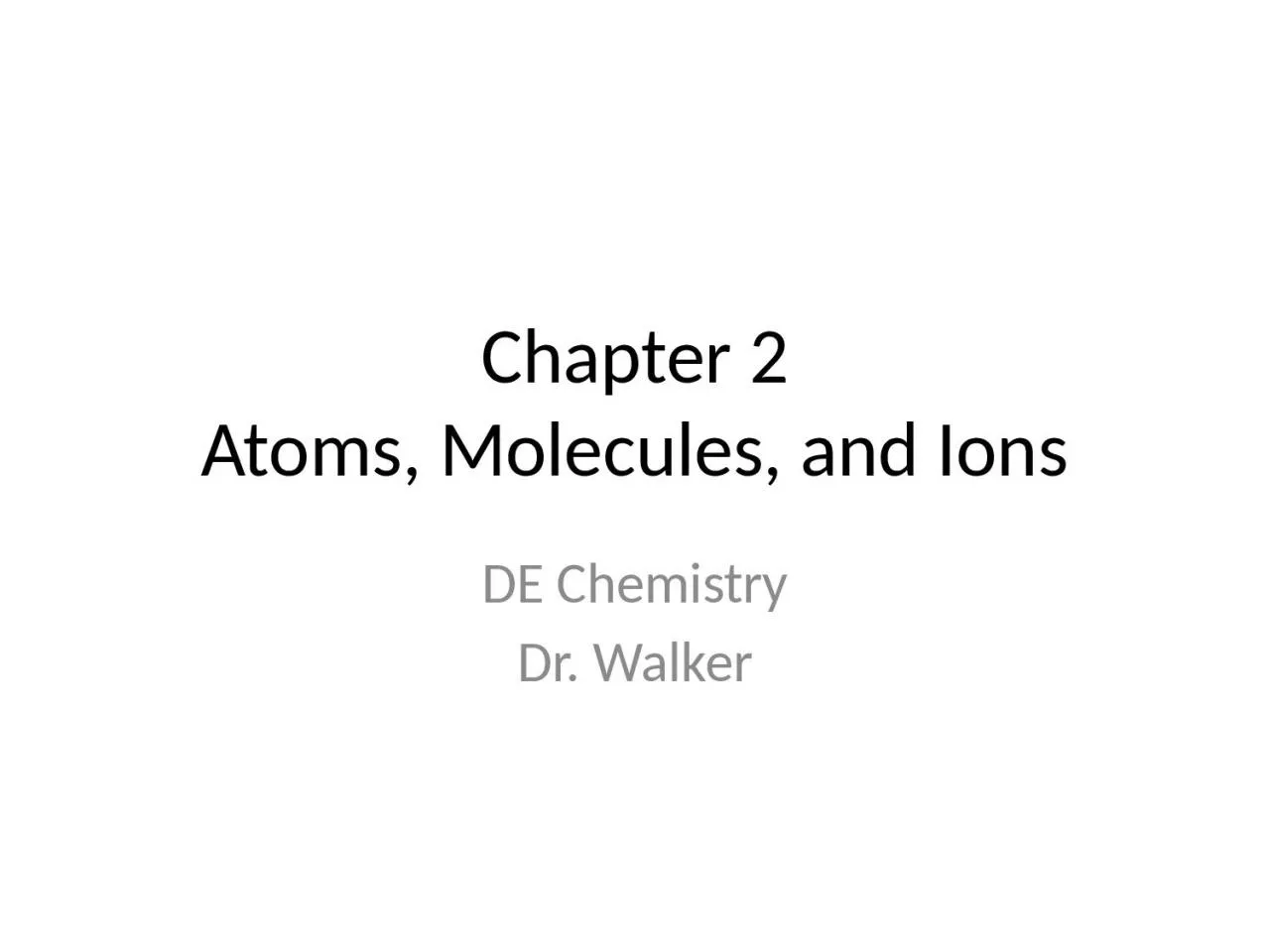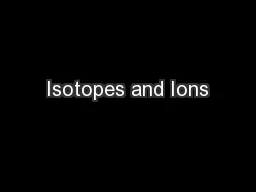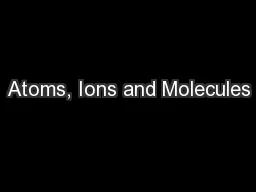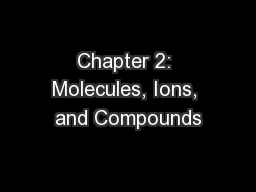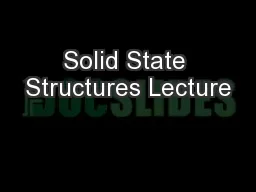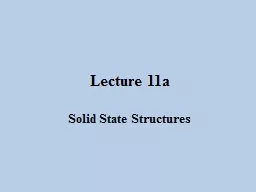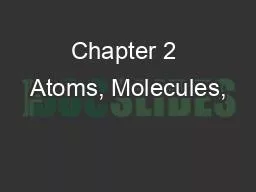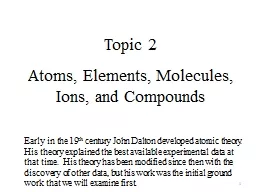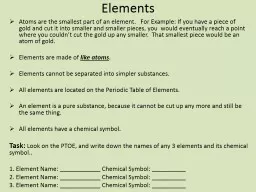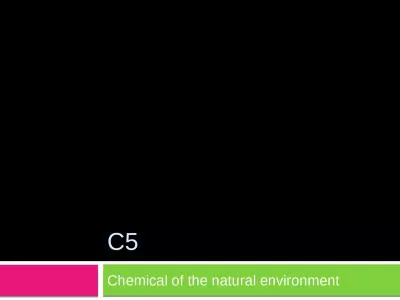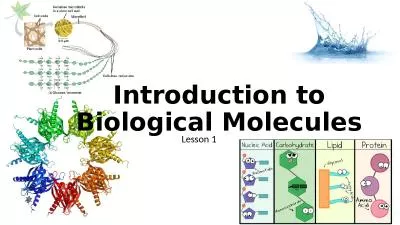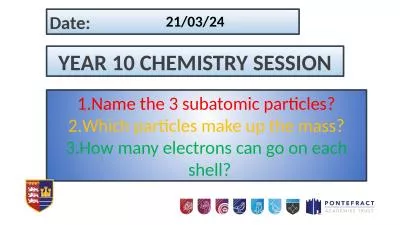PPT-Chapter 2 Atoms, Molecules, and Ions
Author : sophia2 | Published Date : 2024-01-13
DE Chemistry Dr Walker Timeline BC 400 BC Demokritos and Leucippos use the term atomos 1500s Georg Bauer systematic metallurgy Paracelsus medicinal application
Presentation Embed Code
Download Presentation
Download Presentation The PPT/PDF document "Chapter 2 Atoms, Molecules, and Ions" is the property of its rightful owner. Permission is granted to download and print the materials on this website for personal, non-commercial use only, and to display it on your personal computer provided you do not modify the materials and that you retain all copyright notices contained in the materials. By downloading content from our website, you accept the terms of this agreement.
Chapter 2 Atoms, Molecules, and Ions: Transcript
Download Rules Of Document
"Chapter 2 Atoms, Molecules, and Ions"The content belongs to its owner. You may download and print it for personal use, without modification, and keep all copyright notices. By downloading, you agree to these terms.
Related Documents

